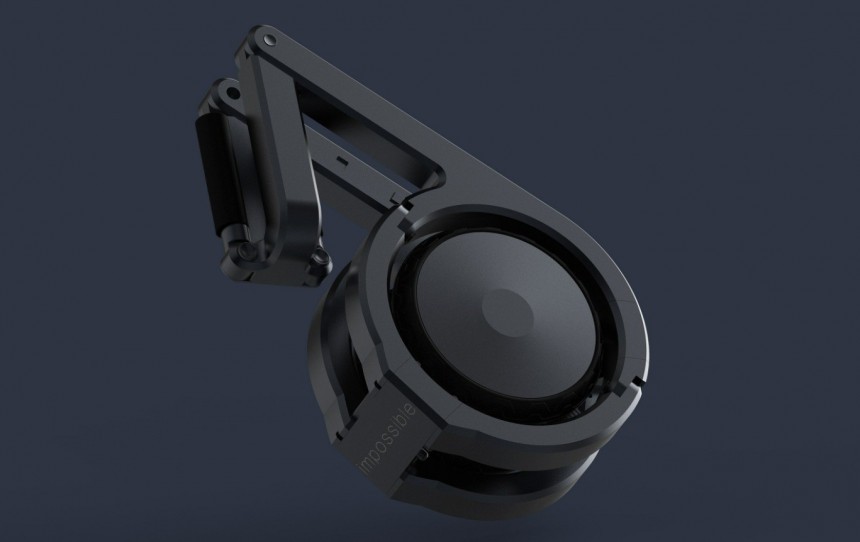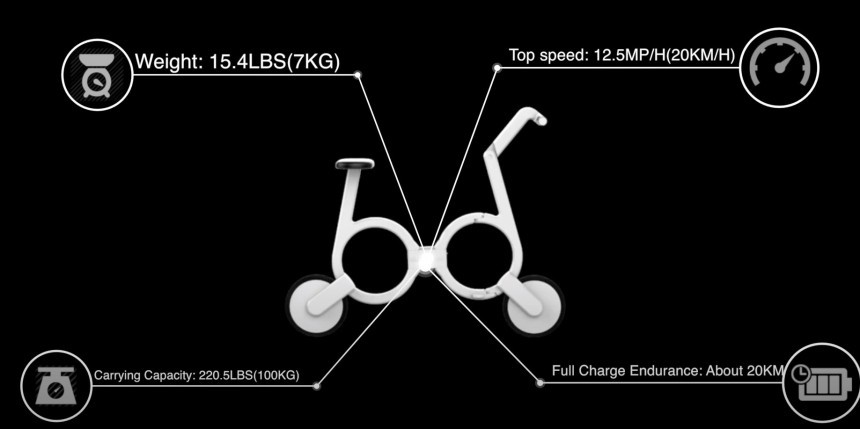It’s no surprise that e-mobility is such a huge success right now. With the level of versatility and eco-friendly goodness EVs bring to the table, you can bet your bottom dollar this wave isn’t slowing down.
With such a movement, you’re bound to see all sorts of designs meant to be the next EV solution to hit streets. One design I've recently run across is known as the Impossible Bike (IB) from Kiwi Design, an alias for an industrial designer from Shenzhen, China, and Impossible Technology, also a China-based company.
Not much is known about Kiwi Design; I've tried to access the designer’s website but was denied, and the same holds true for Impossible Technology. Luckily, a Behance page with a few designs from Kiwi does exist, and the IB is among them.
Now, here’s the thing. The design you see isn’t just a rendering; it’s the result of three years of work and has even made it into a real vehicle. However, the IB has been around since as far back as 2014. So why hasn’t anyone seen it around? Time to find out why.
One of the issues with EVs is that they happen to end up weighing quite a bit as battery and motor components tend to add some heft to a device. Helping solve this issue, the IB only comes in with a weight of just 15.4 lbs (7 kg). That's absolutely nuts and was achieved by Impossible Technology’s commitment to creating a light, compact, and functional vehicle to be a last-mile solution—plus lots of carbon fiber, of course.
Speaking of compact, this EV is so small it can easily fit in your backpack. The IB can easily be folded to about the size of a purse, with the seat capable of being used as a sort of carrier. The designers relied on lever, buttons, telescopic tubes, and hinges to achieve such a compact vehicle.
As far as the motor and battery go, get a load of where exactly these components are hidden. All I was able to find out is that the IB includes a battery capacity that allows for a range of around 20 km (12.4 mi) and is hidden neatly in the seat tube. Honestly, I'm surprised that it’s even capable of covering this distance; just check out the video below to see how small the battery is. Once drained, you can fully recharge in just two hours.
As for the motor, it’s probably hidden in one of the wheels. Thanks to it, the IB can achieve top speeds of around 12.5 mph (20 kph). Oh, and it does that with a max load limit of 220.5 lbs (100 kg). Since it functions more like a scooter, you won’t see any classic pedals, but rather a footrest.
Digging through the pages of time via Google, I was able to run across not one but two funding campaigns that promised to bring the IB to life on a larger scale. A Kickstarter campaign raised over four times the company’s set goal, but was then canceled and moved to IndieGoGo, where only $8,600 dollars were raised. After that, not a single heartbeat. The only sign of life is an occasional disgruntled investor trying to get ahold of the CEO.
As for myself, I'd consider buying an IB just because of the design, even though my local streets would probably snap it in half after just 30 minutes of riding.
Not much is known about Kiwi Design; I've tried to access the designer’s website but was denied, and the same holds true for Impossible Technology. Luckily, a Behance page with a few designs from Kiwi does exist, and the IB is among them.
Now, here’s the thing. The design you see isn’t just a rendering; it’s the result of three years of work and has even made it into a real vehicle. However, the IB has been around since as far back as 2014. So why hasn’t anyone seen it around? Time to find out why.
Speaking of compact, this EV is so small it can easily fit in your backpack. The IB can easily be folded to about the size of a purse, with the seat capable of being used as a sort of carrier. The designers relied on lever, buttons, telescopic tubes, and hinges to achieve such a compact vehicle.
As far as the motor and battery go, get a load of where exactly these components are hidden. All I was able to find out is that the IB includes a battery capacity that allows for a range of around 20 km (12.4 mi) and is hidden neatly in the seat tube. Honestly, I'm surprised that it’s even capable of covering this distance; just check out the video below to see how small the battery is. Once drained, you can fully recharge in just two hours.
Digging through the pages of time via Google, I was able to run across not one but two funding campaigns that promised to bring the IB to life on a larger scale. A Kickstarter campaign raised over four times the company’s set goal, but was then canceled and moved to IndieGoGo, where only $8,600 dollars were raised. After that, not a single heartbeat. The only sign of life is an occasional disgruntled investor trying to get ahold of the CEO.
As for myself, I'd consider buying an IB just because of the design, even though my local streets would probably snap it in half after just 30 minutes of riding.












